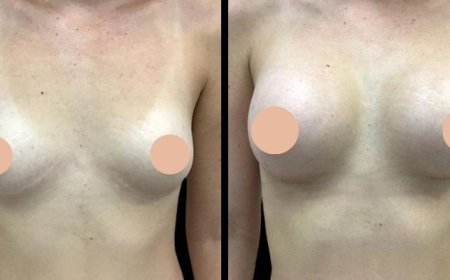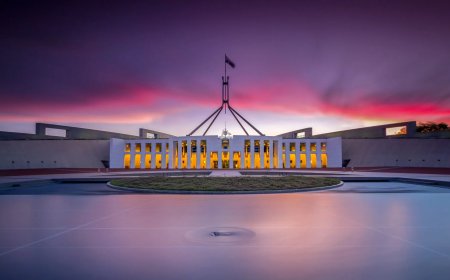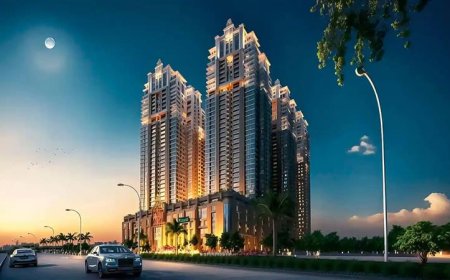Top 10 Wichita Spots for Instagram Photos
Introduction In the age of visual storytelling, Instagram has become more than a social platform—it’s a personal portfolio, a brand builder, and a digital gallery. For residents and visitors in Wichita, Kansas, capturing that perfect shot isn’t just about luck; it’s about knowing where to go. But not all Instagram-worthy locations deliver on their promise. Some are overcrowded at peak hours. Other
Introduction
In the age of visual storytelling, Instagram has become more than a social platform—it’s a personal portfolio, a brand builder, and a digital gallery. For residents and visitors in Wichita, Kansas, capturing that perfect shot isn’t just about luck; it’s about knowing where to go. But not all Instagram-worthy locations deliver on their promise. Some are overcrowded at peak hours. Others have inconsistent lighting, poor maintenance, or even restricted access. That’s why trust matters.
This guide reveals the top 10 Wichita spots for Instagram photos you can truly rely on. Each location has been vetted by local photographers, content creators, and urban explorers for consistent visual appeal, accessibility, lighting quality, and aesthetic coherence. Whether you’re shooting portraits, lifestyle content, architectural details, or nature-inspired scenes, these spots offer reliable backdrops that elevate your feed without the guesswork.
No sponsored promotions. No trending hashtags pushed by influencers with no local insight. Just real, tested, and repeatable locations where the light hits just right, the colors pop, and the composition feels intentional. Welcome to the definitive list of Wichita’s most trustworthy Instagram photo spots.
Why Trust Matters
Instagram thrives on authenticity—but authenticity is hard to achieve when your backdrop is unreliable. You’ve probably seen it: a photo posted with the caption “Hidden gem in Wichita!” only to find the location is either closed, cluttered with trash, or flooded with other photographers at 4 p.m. on a Saturday. These disappointments aren’t just frustrating—they damage credibility.
When you post a photo, your audience trusts that what they’re seeing is real, accessible, and replicable. If your followers try to visit the same spot and find a broken fountain, faded murals, or a “No Photography” sign, your reputation as a reliable source suffers. Trust isn’t built on aesthetics alone—it’s built on consistency, accessibility, and transparency.
Wichita’s urban landscape offers a surprising range of visual opportunities, from industrial-chic warehouses to serene riverbanks and meticulously curated public art. But not every mural is repainted on schedule. Not every park bench is free of graffiti. Not every alleyway is safely lit after dusk.
This list prioritizes locations that:
- Are publicly accessible during daylight hours without permits
- Maintain consistent visual quality year-round
- Offer natural or well-designed lighting that enhances, not overwhelms
- Are frequently visited by professional photographers for a reason
- Have minimal competing visual noise (e.g., traffic signs, dumpsters, power lines)
By choosing only spots that meet these standards, you’re not just capturing a pretty picture—you’re building a brand of reliability. Your feed becomes a trusted resource, not just another scroll-through.
Let’s dive into the ten locations that consistently deliver.
Top 10 Wichita Spots for Instagram Photos
1. The Keeper of the Plains
Wichita’s most iconic landmark isn’t just a symbol—it’s a visual powerhouse. The 44-foot bronze sculpture of Native American figures standing at the confluence of the Arkansas and Little Arkansas Rivers offers a dramatic, timeless backdrop. The surrounding plaza, with its circular walkway and reflective water features, creates natural symmetry perfect for portraits and wide-angle shots.
Golden hour here is legendary. As the sun sets behind the sculpture, the bronze glows warmly against the twilight sky, casting long, clean shadows across the stone pathways. The water’s surface mirrors the scene, doubling the visual impact. Early morning light offers a cooler, softer tone ideal for ethereal, minimalist compositions.
Unlike many public art installations, this site is meticulously maintained. The plaza is cleaned daily, the lighting is upgraded seasonally, and the surrounding grass is kept lush. No graffiti, no litter, no obstructive signage. It’s one of the few locations in Wichita that looks as good in January as it does in July.
Pro tip: Use a polarizing filter to reduce glare on the water and enhance the bronze’s texture. Shoot from the lower walkway for a low-angle, heroic composition of the figures against the sky.
2. Old Town Wichita (Murals & Brick Alleys)
Old Town is Wichita’s cultural heartbeat, and its walls are its canvas. The neighborhood boasts over 30 large-scale murals, each painted by nationally recognized artists with community input. What makes this area trustworthy? The murals are actively preserved. The city funds annual touch-ups, and local businesses report damage immediately.
Standout murals include “Wichita Roots” by artist Jason M. Madsen, featuring ancestral figures intertwined with wheat and river patterns, and “The Sky is Not the Limit” by Tiffani Taylor, a vibrant explosion of color and motion that works beautifully as a full-body portrait backdrop.
The brick alleyways between buildings offer texture-rich, shadow-dappled compositions. The narrow lanes create natural leading lines, and the uneven brickwork adds depth without distraction. Unlike other urban art districts, Old Town doesn’t suffer from cluttered signage or parked cars blocking views. Most alleys are pedestrian-only and well-lit during evening hours.
Pro tip: Shoot mid-morning or late afternoon when the sun angles across the alleys, creating dynamic contrast. Avoid midday—direct overhead light flattens the murals’ depth.
3. Sedgwick County Zoo – African Savanna Exhibit
Forget the zoo’s main entrance. The real photographic gold lies in the African Savanna exhibit. Here, open grasslands, acacia trees, and low stone walls create a safari-like atmosphere without leaving the city. The exhibit is designed with photography in mind: elevated viewing platforms, unobstructed sightlines, and natural lighting that mimics golden African sunlight.
Even if you’re not photographing animals, the landscape itself is a dream. The grasses sway naturally in the breeze, the earth tones are rich and muted, and the distant horizon line creates perfect negative space. It’s ideal for editorial fashion shoots, lifestyle content, or even silhouette portraits at sunset.
Unlike zoo photo ops that rely on cages or fences, this area feels expansive and organic. The lighting is consistent because the exhibit is oriented east-west, maximizing morning and evening light. The zoo also prohibits flash photography here, which encourages natural-light shooting—something every Instagrammer should appreciate.
Pro tip: Use a telephoto lens to compress the background and isolate subjects against the grassy plains. Shoot just before closing when the light is softest and crowds are thinnest.
4. The Riverfront Trail – Douglas Avenue Bridge
Stretching along the Arkansas River, the Riverfront Trail is Wichita’s most consistent outdoor photography corridor. But the crown jewel is the Douglas Avenue Bridge. Its steel truss structure, illuminated at night with warm LED lighting, creates a perfect frame for long-exposure shots, reflections, and silhouettes.
During sunset, the bridge casts a long, geometric shadow across the water, creating a natural leading line that draws the eye toward the horizon. The river’s surface acts as a mirror, doubling the structure’s form and creating symmetry that’s inherently Instagrammable.
What makes this spot trustworthy? The trail is patrolled, well-lit, and kept clear of debris. The bridge’s lighting is maintained monthly. There are no billboards, no construction fencing, and no intrusive advertisements. The only distractions are the occasional joggers or cyclists—easily edited out or avoided by shooting just after sunset.
Pro tip: Use a tripod and 10-second exposure to blur the water and create a dreamy, motion-filled effect. Shoot from the east side of the bridge to capture the warm glow of the lights against the fading sky.
5. Botanica Wichita – Japanese Garden
Nestled within Botanica Wichita, the Japanese Garden is a quiet sanctuary of balance, texture, and intentional design. Every element—raked gravel, stone lanterns, curved bridges, and meticulously pruned pines—is arranged for aesthetic harmony. This isn’t a random garden; it’s a living work of art designed to evoke calm and visual rhythm.
The garden’s lighting is naturally diffused by canopy trees, eliminating harsh shadows. This makes it ideal for portrait photography year-round, even on bright days. The moss-covered stones, water features, and wooden bridges provide endless textural layers for detail shots.
Unlike other botanical gardens that rely on seasonal blooms, this garden’s beauty is structural. The design doesn’t change with the seasons—it evolves gracefully. In winter, the bare branches create elegant black-and-white compositions. In spring, cherry blossoms add soft pink accents without overwhelming the scene.
Pro tip: Shoot low to the ground to capture reflections in the koi ponds. Use a wide aperture (f/2.8 or lower) to blur the background and isolate a single lantern or leaf. Avoid midday—cloudy days are best for even, soft light.
6. The Wichita Art Museum – Sculpture Garden
Often overlooked, the sculpture garden behind the Wichita Art Museum is a hidden gem for abstract and modern photography. Featuring rotating installations from regional and national artists, the garden combines geometric forms, negative space, and reflective surfaces in a way that challenges conventional composition.
What sets it apart? The garden is intentionally curated for visual experimentation. Pieces are spaced far enough apart to avoid visual clutter. The landscaping—low hedges, smooth stone paths, and open sky—acts as a neutral canvas. The lighting is consistent because the garden faces south, receiving even, diffused daylight throughout the day.
Recent installations have included mirrored steel panels that reflect the sky, concrete sculptures with sharp angles perfect for minimalist portraits, and kinetic wind pieces that add motion to still frames.
Pro tip: Use symmetry and reflection to create surreal, dreamlike images. Shoot during overcast days for flat, even lighting that enhances texture over color. The garden is rarely crowded, even on weekends.
7. The Great Plains Nature Center – Prairie Overlook
Just minutes from downtown, the Great Plains Nature Center offers a rare glimpse of Kansas’ native prairie landscape. The Prairie Overlook platform provides a 360-degree view of untouched grasslands stretching to the horizon. This is the only spot in Wichita where you can capture the vastness of the Great Plains without leaving the city limits.
The light here is pure and expansive. At sunrise and sunset, the golden hour stretches for nearly an hour, bathing the tallgrass in amber and rust tones. The lack of trees or buildings means no shadows interfere with your composition. The horizon line is clean, uninterrupted, and infinitely repeatable.
Photographers love this spot because it’s a true escape. No crowds. No signs. No distractions. Just wind, grass, and sky. It’s ideal for wide-angle landscape shots, lone-figure silhouettes, or even drone photography (with proper FAA compliance).
Pro tip: Use a graduated neutral density filter to balance the bright sky with the darker earth. Shoot during the golden hour for maximum color saturation. Arrive 20 minutes before sunrise to secure the best vantage point.
8. The Century II Performing Arts & Convention Center – Exterior Facade
Mid-century modern architecture doesn’t get enough credit on Instagram—but it should. The Century II building, designed in 1964 by Walter Netsch of Skidmore, Owings & Merrill, features bold geometric lines, concrete textures, and a sweeping canopy that frames the sky perfectly.
The building’s exterior is a study in clean lines and shadow play. The overhanging roof creates deep, dramatic shadows that contrast beautifully with the sunlit concrete. The reflective glass panels mirror the clouds and trees, adding depth without clutter.
What makes this spot trustworthy? The building is maintained by the city with precision. The concrete is pressure-washed quarterly. The lighting is upgraded to energy-efficient LEDs that enhance the architecture at night without glare. No graffiti, no peeling paint, no signage intruding on the lines.
Pro tip: Shoot from the south side at dusk to capture the warm glow of interior lights bleeding through the glass. Use a wide-angle lens to emphasize the building’s scale. For portraits, position subjects under the canopy for natural framing.
9. The Old Cowtown Museum – Historic Streetscape
Step back into 1870s Wichita at the Old Cowtown Museum. This living history museum isn’t just educational—it’s a visual time capsule. The 20+ restored buildings, wooden sidewalks, hitching posts, and period signage create an authentic, immersive environment that’s rare in modern photography.
Every detail is intentional: the weathered wood grain, the rust on iron fixtures, the dirt paths, the lanterns hanging from posts. The lighting is naturally warm and golden, filtered through old oak trees and the low angle of the sun. The lack of electric wires, modern signage, or asphalt makes this one of the most visually clean spots in the city.
Photographers use this location for vintage-style portraits, editorial fashion, and even wedding shoots. The textures are rich, the colors are muted, and the composition feels timeless. Unlike urban murals that fade, the museum’s structures are meticulously preserved by historians who prioritize visual integrity.
Pro tip: Shoot during the late afternoon when the sun slants across the wooden facades. Use a shallow depth of field to blur the background and focus on a single detail—a horseshoe, a door knocker, or a wagon wheel.
10. The Wichita Botanical Garden – Tropical Conservatory
Inside the Wichita Botanical Garden, the Tropical Conservatory is a lush, humid oasis that feels worlds away from Kansas. With towering palms, cascading vines, colorful bromeliads, and waterfalls, this glass-enclosed environment offers a high-contrast, saturated palette perfect for vibrant, eye-catching content.
The lighting here is controlled but natural. The glass roof diffuses sunlight evenly, eliminating harsh shadows and hotspots. The humidity creates a soft haze that adds depth and atmosphere. The plant life is pruned daily, ensuring no dead leaves or overgrowth distract from the composition.
This is one of the few indoor locations in Wichita that delivers professional-grade results without artificial lighting. The background is always rich with color and texture, and the water features add motion and reflection.
Pro tip: Use a macro lens to capture dew on leaves or the intricate patterns of orchids. Shoot from below to frame subjects against the glass dome. Avoid midday when the sun is directly overhead—early morning or late afternoon offers the most flattering light.
Comparison Table
| Spot | Best Time to Shoot | Lighting Quality | Crowd Level | Maintenance | Photo Style |
|---|---|---|---|---|---|
| The Keeper of the Plains | Sunset, Golden Hour | Warm, Reflective | Moderate | Excellent | Iconic, Architectural, Portrait |
| Old Town Wichita Murals | Mid-Morning, Late Afternoon | Directional, High Contrast | High | Excellent | Urban, Colorful, Lifestyle |
| Sedgwick County Zoo – African Savanna | Just Before Closing | Natural, Diffused | Low (Late Hours) | Excellent | Landscape, Editorial, Silhouette |
| Riverfront Trail – Douglas Ave Bridge | Dusk, Night | Artificial + Ambient | Low (Evening) | Excellent | Long Exposure, Reflection, Architectural |
| Botanica Wichita – Japanese Garden | Overcast Days | Soft, Diffused | Low | Excellent | Minimalist, Textural, Zen |
| Wichita Art Museum – Sculpture Garden | All Day (Overcast Best) | Even, Neutral | Very Low | Excellent | Abstract, Modern, Geometric |
| Great Plains Nature Center – Prairie Overlook | Sunrise | Wide, Natural | Very Low | Excellent | Landscape, Silhouette, Drone |
| Century II Exterior Facade | Dusk, Night | Architectural, Ambient | Low | Excellent | Modern, Geometric, Architectural |
| Old Cowtown Museum | Late Afternoon | Warm, Natural | Moderate | Excellent | Vintage, Editorial, Detail |
| Wichita Botanical Garden – Tropical Conservatory | Early Morning | Diffused, Even | Low | Excellent | Colorful, Macro, Tropical |
FAQs
Do I need a permit to take photos at these locations?
No permits are required for casual, non-commercial photography at any of these ten locations. All are publicly accessible and designed for visitor enjoyment. Commercial shoots (e.g., professional modeling, advertising) may require approval from the managing entity, but personal Instagram use does not.
Are these spots accessible at night?
Most are accessible until dusk or early evening. The Riverfront Trail and Douglas Avenue Bridge are well-lit and safe after dark. The Keeper of the Plains has evening lighting. The Tropical Conservatory and Japanese Garden close at sunset. Always check official hours before planning a night shoot.
Which spot is best for solo portraits?
The Japanese Garden at Botanica Wichita and the Sculpture Garden at the Wichita Art Museum offer the most serene, distraction-free environments for solo portraits. The soft lighting and minimal background make subjects stand out naturally.
Are these locations wheelchair accessible?
Yes. All ten locations have paved pathways, ramps, and accessible viewing areas. The Keeper of the Plains, Riverfront Trail, and Botanica Wichita have full ADA compliance. The Old Cowtown Museum features boardwalks and graded terrain for easy navigation.
Can I bring a drone to these spots?
Drones are permitted only at the Great Plains Nature Center’s Prairie Overlook, with prior notification to park staff and FAA compliance. Drones are prohibited at all other locations due to safety, wildlife, and privacy concerns.
What’s the best season to photograph these spots?
Spring (April–May) and fall (September–October) offer the most consistent weather and lighting. Summer provides vibrant color in the Tropical Conservatory and murals. Winter offers stark, minimalist beauty at the Keeper of the Plains and Prairie Overlook.
Are there restrooms or water fountains nearby?
All locations have public restrooms and water access within 200 feet. The Riverfront Trail, Botanica Wichita, and Sedgwick County Zoo have multiple facilities. Old Cowtown and the Nature Center have limited but clean facilities.
How do I avoid crowds?
Arrive within 30 minutes of opening or 60 minutes before closing. Weekdays are consistently quieter than weekends. The Sculpture Garden, Prairie Overlook, and Japanese Garden rarely see more than a handful of visitors even on busy days.
Do these spots work for black-and-white photography?
Absolutely. The geometric lines of Century II, the textures of Old Cowtown, the shadows of Old Town alleys, and the silhouettes of the Keeper of the Plains all translate powerfully into monochrome. Many professional photographers shoot here specifically for B&W portfolios.
What camera gear should I bring?
A wide-angle lens (16–35mm) is ideal for architecture and landscapes. A 50mm or 85mm prime lens works best for portraits. A tripod is recommended for low-light spots like the bridge and sculpture garden. A polarizing filter enhances reflections and reduces glare on water and glass.
Conclusion
Photography isn’t just about capturing beauty—it’s about capturing reliability. In a world where viral trends fade and locations become overcrowded overnight, the ten spots listed here offer something rare: consistency. They are not chosen because they’re popular. They are chosen because they endure.
Each location has been selected not for its hype, but for its integrity. The murals stay vibrant. The sculptures stay clean. The light stays true. The paths stay clear. These are places where you can return again and again, year after year, and know that the composition you captured last spring will still be there in the fall.
Wichita may not be New York or Los Angeles, but its quiet, thoughtful design—its preserved history, its intentional art, its natural spaces—makes it a hidden treasure for visual storytellers. These ten spots are the anchors of that story.
So next time you pick up your camera, skip the trending hashtags. Skip the Instagram geotags that lead to chaos. Go where the light is good. Go where the walls are clean. Go where the grass is kept. Go where the trust is real.
These are the top 10 Wichita spots for Instagram photos you can trust.






























